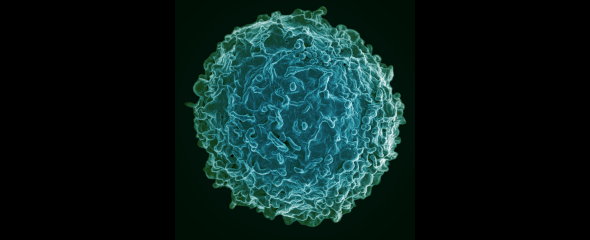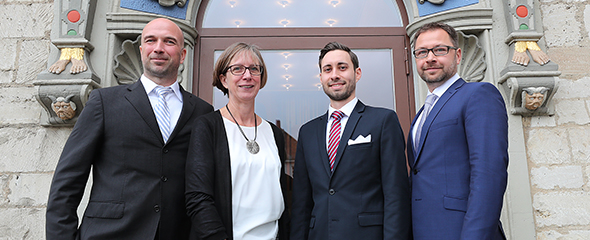
Our expertise
To modify the genome of mice we employ state of the art technologies of molecular biology. Genetic engineering comprises the introduction of point mutations and tags into the mouse genome, modifications for constitutive and tissue specific (conditional) inactivation of genes (knock-out), the targeted integration of reporters or recombinases (knock-in) and finally also the integration of synthetic cassettes for externally controlled expression of genes.
The following tools are routinely used:
- classical strategies for homologous recombination
- Crispr/Cas9 based homologous recombination and generation of knock-outs
- Targeting of chromosomal ‘hot-spots’ with the help of sequence specific recombinases (recombinase mediated cassette exchange RMCE)
- Engineering of bacterial artificial chromosomes (BACs)
To generate genetically modified mice two different strategies routes are followed:
- modification of embryonic stem cells, followed by subsequent implementation in blastocysts and transfer into founder mice
- modification of zygotes and subsequent transfer into founder mice.
Our research
We develop tools for predictable and externally controlled gene expression. To this end, we investigate the interaction of introduced (synthetic) cassettes with the host’s flanking chromosomal environment. Further, we investigate the mechanisms leading to transgene inactivation and develop methods to overcome sile
Our expertise
To modify the genome of mice we employ state of the art technologies of molecular biology. Genetic engineering comprises the introduction of point mutations and tags into the mouse genome, modifications for constitutive and tissue specific (conditional) inactivation of genes (knock-out), the targeted integration of reporters or recombinases (knock-in) and finally also the integration of synthetic cassettes for externally controlled expression of genes.
The following tools are routinely used:
- classical strategies for homologous recombination
- Crispr/Cas9 based homologous recombination and generation of knock-outs
- Targeting of chromosomal ‘hot-spots’ with the help of sequence specific recombinases (recombinase mediated cassette exchange RMCE)
- Engineering of bacterial artificial chromosomes (BACs)
To generate genetically modified mice two different strategies routes are followed:
- modification of embryonic stem cells, followed by subsequent implementation in blastocysts and transfer into founder mice
- modification of zygotes and subsequent transfer into founder mice.
Our research
We develop tools for predictable and externally controlled gene expression. To this end, we investigate the interaction of introduced (synthetic) cassettes with the host’s flanking chromosomal environment. Further, we investigate the mechanisms leading to transgene inactivation and develop methods to overcome sile
„Targeted genetic modification of mice represents a unique method in infection research. With this technology, experimental mouse models can be developed that allow the investigation of many aspects of infection and host response.“

Dagmar Wirth studied chemistry in Braunschweig. She began focusing on gene regulation in mammalian cells as part of her doctoral work at GBF – today’s HZI – with a special focus on chromosomal elements that affect gene expression. As a post-doc, she conducted research on recombination in mammalian cells and viruses and developed recombinant viruses for application in biotechnology and gene therapy.
Following her work as a scientist in the Department of Clinical Immunology at the Medical University in Hannover, she returned in 2004 to assume her current role as principal investigator for the project ‘Immune evasion in chronic infections’ and as head of the research group ‘Model Systems for Infection and Immunity’ (MSYS).
One underlying activity of her research in MSYS is the generation of genetically modified mice with predictable expression properties. To provide this expertise to all research groups of the center, in 2012, the Service Unit "Transgenic Mice" (TGSM) was initiated which is also headed by Dagmar Wirth.
Team




Selected Publications
Gödecke, N., Herrmann, S., Weichelt, V., and Wirth, D. (2023). A Ubiquitous Chromatin Opening Element and DNA Demethylation Facilitate Doxycycline-Controlled Expression during Differentiation and in Transgenic Mice.
ACS Synth Biol 12, 482-491.
DOI: 10.1021/acssynbio.2c00450
Brown, R.J.P., Tegtmeyer, B., Sheldon, J., Khera, T., Anggakusuma, Todt,D., Vieyres, G., Weller, R., Joecks, S., Zhang, Y.,Sake, S., Bankwitz, D., Welsch, K., Ginkel, C., Engelmann, M., Gerold, G., Steinmann, E.,Yuan, Q., Ott, M., Vondran, F.W.R., Krey, T., Stroh, L.J.,Miskey, C., Ivics, Z., Herder, V., Baumgartner, W., Lauber, C., Seifert, M., Tarr, A.W., McClure, C.P., Randall, G., Baktash, Y., Ploss, A., Thi, V.L.D., Michailidis, E., Saeed, M., Verhoye, L., Meuleman, P., Goedecke, N., Wirth, D., Rice, C.M., Pietschmann, T. (2020) Liver-expressed Cd302 and Cr1l limit hepatitis C virus cross-species transmission to mice.
Sci Adv 6: eabd3233.
DOI: 10.1126/sciadv.abd3233
Ziegler, P.K., Bollrath, J., Pallangyo, C.K., Matsutani, T., Canli, Ö., De Oliveira, T., Diamanti, M.A., Müller, N., Gamrekelashvili, J., Putoczki, T., Horst, D., Mankan, A.K., Öner, M.G., Müller, S., Müller-Höcker, J., Kirchner, T., Slotta-Huspenina, J., Taketo, M.M., Reinheckel, T., Dröse, S., Larner, A.C., Wels, W.S., Ernst, M., Greten, T.F., Arkan, M.C., Korn, T., Wirth, D., Greten, F.R. (2018) Mitophagy in Intestinal Epithelial Cells Triggers Adaptive Immunity during Tumorigenesis.
Cell 174: 88-101.
DOI: 10.1016/j.cell.2018.05.028
Gödecke, N., Zha, L., Spencer, S., Behme, S., Riemer, P., Rehli, M., Hauser, H., Wirth, D. (2017) Controlled re-activation of epigenetically silenced Tet promoter-driven transgene expression by targeted demethylation. Nucl Acids Res Sep 19;45(16):e147.
DOI:10.1093/nar/gkx601
Cebula, M., Riehn, M., Hillebrand, U., Kratzer, Ramona, Kreppel, F., Koutsoumpli, G., Daemen, T., Hauser, H., Wirth, D. (2017) TLR9 mediated conditioning of the liver environment is essential for successful intrahepatic immunotherapy and effective memory recall.
Molecular Therapy 25 (10): 2289-2298.
DOI: 10.1016/j.ymthe.2017.06.018
Publications
Newsroom
Are you interested in a bachelor or master thesis? We are looking forward to your request!





